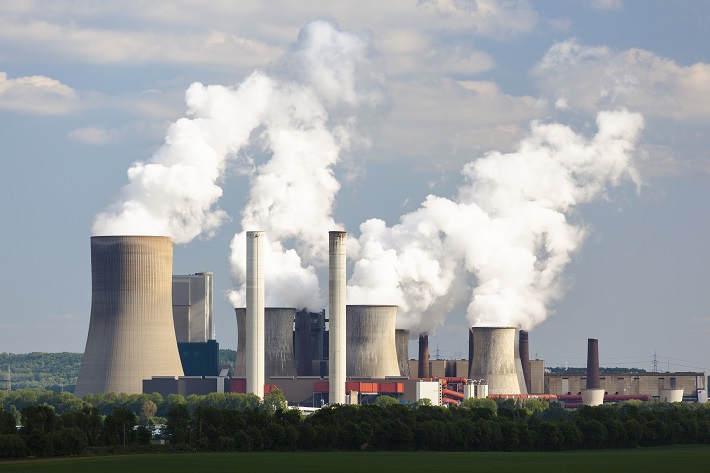Current Status
Up to now, the coal power industry has been playing a major role in the electricity output of the world and of many countries. Currently, coal power industry is present in 77 countries (in 2000 this number was 65), another 13 countries are planning to develop coal power industry. The capacity of the world coal power industry has nearly doubled in the period 2000-2017 from 1,063GW to 1,995GW. The three countries with the largest total coal power capacity in the world are China: 935GW, the United States: 279GW and India: 215GW, followed by: Germany: 50GW, Japan: 44.5GW, South Africa: 41, 3GW, Korea: 38GW, Poland: 29GW and Indonesia: 28.6GW.
The world’s coal-fired power output in 2017 was 9,723.4 billion kWh, accounting for the highest proportion of 38.1% of the world’s total electricity production, far exceeding the second-ranked gas power 23.1%. Countries with a high proportion of investors include: South Africa (87.7%), Poland (78.8%), India (76.3%), China (67.2%), Kazakhstan- stan (62.4%), Australia (61.3%), Indonesia (58.5%), Taiwan (46.8%), South Korea (46.3%), Malaysia Malaysia (44.7%), Germany (37%), Japan (33.6%), Turkey (33%), Ukraine (32.2%), USA (30, 7%).
The development of the coal power industry of each country depends on the potential of available coal resources in the country and the ability to access coal from outside. In general, the Asia-Pacific countries still strengthen the development of coal power industry. Some countries have reduced their coal power sector due to the depletion of domestic coal resources, or because there are better alternative energy resources, especially because the level of emissions is already too high to be reduced.

Along with the development of the coal power industry, the trend of using coal in the world is increasing. The average world coal production from 2006-2016 increased by 1.5%/year and in 2017 increased by 3.2% compared to 2016; which is mainly due to: Asia-Pacific, respectively: 3.2%/year and 2.7%; Africa: 0.6%/year and 3.6%; CIS: 1.6%/year and 5.6%. Currently, about 65% of coal production is used for power generation, the rest for other manufacturing industries and domestic fuel.
In general, no country has the same structure of electricity from fuel sources. The structure of electricity sources of each country depends on the level of economic development and the potential of energy resources available in the country as well as the accessibility to energy resources in foreign countries of each country. Therefore, it is not possible to take the structure of a certain country as a model and then imitate it. Each country has a reasonable structure suitable to its circumstances and characteristics in each period in the direction of ensuring optimal economic, stability and safety of the power system and environmental sustainability. environment (emission levels below allowable level).
An important factor driving the development of the coal power industry is the advancement in coal-fired power generation technology and increased emission reduction.
Thereby, it shows that the potential for reducing emissions of the coal power industry thanks to technological improvement is still very large. Not coincidentally, recently, the World Coal Association has changed its manifesto from “Coal is the future” to “Coal is the bridge to the future” of mankind.
The world’s coal-fired power development trend
There are currently two trends in coal power industry: Downtrend, mainly in OECD countries (USA, UK, France, Italy, Netherlands, Portugal, Austria, Ireland, Denmark, Sweden, Finland, etc.) and increasing trend, mainly non-OECD countries, especially countries: China, India, ASEAN, South Africa, Turkey, Bangladesh, Pakistan, etc.
According to the forecast of the International Energy Organization (IEA World Energy Outlook, 2016) in the period 2015-2040, the total coal power capacity in the world will increase by 947GW, of which the OECD will increase by 97GW, the non-OECD will increase by 850GW. China alone 383 GW and India 306 GW
Forecast of coal demand for power generation
According to the IEA forecast in “World Energy Outlook 2016” in Current Policies Scenario, total world coal demand could increase by 1.18% annually on average between 2014 and 2040. This rate is significantly lower than the growth rate of 2.5%/year in the period 1990÷2014. According to this forecast scenario, by 2040, coal will still be the leading fuel source for power generation, accounting for 40% of total fuel demand. In case new policies are implemented, coal demand may decrease significantly with the growth rate in the period 2014-2040 falling to 0.49%/year.
Regardless of the forecast scenario, China is still the largest coal consumer, although it has reduced the growth rate from 8.3%/year in 2000÷2014 to 0.8%/year in 2014÷2040 . China’s coal consumption peaked in 2025 then gradually declined in the following years. Coal consumption in OECD countries will decline with the US still leading coal consumption in the OECD. The decline in coal demand in OECD countries is mainly in the power generation sector, where environmental policies are implemented and coal is replaced by natural gas.
